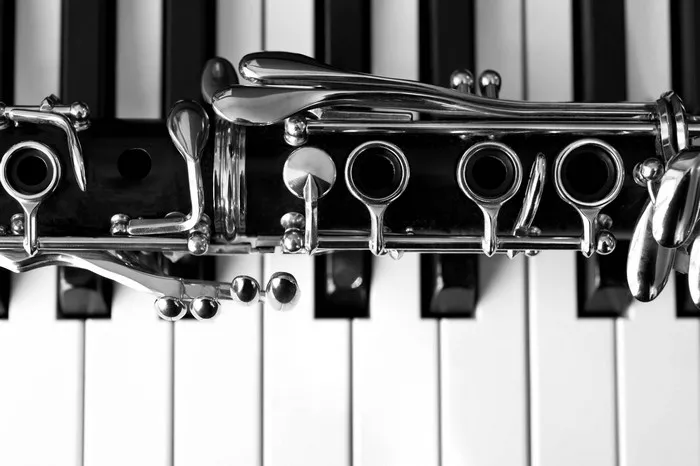When it comes to woodwind instruments, the clarinet and saxophone stand as two of the most popular choices for musicians. Both renowned for their soulful melodies and unique timbres, these instruments have found their place in various music genres, from classical to jazz and beyond. As aspiring musicians contemplate their musical journey, the question of which instrument is easier to learn often arises. In this comprehensive comparison, we will explore the characteristics, playing techniques, and learning curves of the clarinet and saxophone to help you make an informed decision on your path to musical excellence.
Understanding Clarinet:
The clarinet is a single-reed instrument with a long cylindrical body, typically made of wood or plastic. Its distinctive sound is characterized by its warm and smooth tone, making it a prominent choice in classical, orchestral, and chamber music settings. The clarinet comes in various sizes, with the B-flat and A clarinets being the most common.
Understanding Saxophone:
The saxophone, on the other hand, is a family of instruments with varying sizes and pitches. Invented by Adolphe Sax in the 1840s, the saxophone combines the characteristics of both woodwind and brass instruments. Its versatility and powerful sound have made it a staple in jazz, rock, funk, and contemporary music. The most common types of saxophones are the alto, tenor, and soprano saxophones.
Clarinet vs. Saxophone: A Comparative Analysis
1. Embouchure
The embouchure, or the way a musician shapes their mouth and lips to produce sound, differs between the clarinet and saxophone. Clarinet players use a thin, focused embouchure with the upper teeth resting on the mouthpiece, while saxophonists use a broader embouchure with a larger mouthpiece and their lower lip covering their teeth.
2. Fingerings and Keywork
The fingerings and keywork on the clarinet and saxophone are distinct. The clarinet has a simple system of fingerings, with open holes covered by the fingers. On the other hand, saxophones have a more complex key system with multiple keys and buttons.
3. Range
The range of notes that each instrument can produce also varies. The clarinet typically has a slightly wider range than most saxophones, allowing for higher notes. However, the saxophone’s unique keywork allows for easier access to altissimo notes (very high notes) compared to the clarinet.
4. Breath Control
Both instruments require good breath control, but the saxophone tends to be more forgiving in this aspect. The larger reed and mouthpiece of the saxophone make it easier for beginners to produce a sound with less effort.
5. Sound Projection
The saxophone’s conical shape and larger bell contribute to its powerful and resonant sound projection, making it well-suited for soloing and leading in ensembles. In contrast, the clarinet’s cylindrical design gives it a more focused and controlled sound, making it an ideal instrument for blending in with other woodwinds and strings.
Which is Easier to Learn: Clarinet or Saxophone?
The ease of learning the clarinet or saxophone depends on various factors, including the individual’s prior musical experience, physical attributes, and personal preferences. Here are some considerations to help you decide:
1. Clarinet:
Advantages:
The clarinet’s simple fingerings and focused embouchure make it easier for beginners to produce a sound quickly. Its versatility in classical music and ease of blending in ensembles make it an attractive choice for aspiring woodwind players.
Challenges:
Achieving a smooth and consistent sound throughout the clarinet’s range requires diligent practice and breath control. The transition between different registers can be challenging for beginners.
2. Saxophone:
Advantages:
The saxophone’s larger reed and mouthpiece make it more forgiving for beginners, requiring less pressure to produce a sound. Its powerful sound projection and popularity in various music genres offer versatility and opportunities for performance.
Challenges:
The saxophone’s complex keywork and broader embouchure may take more time to master for some beginners. Achieving control over the altissimo register requires focused practice and a developed embouchure.
Tips for Learning Clarinet or Saxophone
Regardless of whether you choose the clarinet or saxophone, here are some valuable tips to support your learning process:
1. Get a Good Teacher:
A skilled teacher can guide you through the fundamentals and provide personalized instruction, helping you develop proper technique and avoid bad habits.
2. Practice Regularly:
Consistent practice is essential for progress. Set aside dedicated practice time each day to develop muscle memory and improve your playing skills.
3. Start with the Basics:
Begin with simple melodies, scales, and exercises to build a strong foundation. Gradually progress to more challenging pieces as you gain confidence.
4. Listen to Professional Players:
Listening to accomplished clarinetists and saxophonists can provide inspiration and insights into sound production, phrasing, and musicality.
5. Focus on Tone Production:
Work on producing a rich and resonant tone on your instrument. Tone quality is fundamental to musical expression and interpretation.
6. Experiment with Different Music Styles:
Explore various music genres to expand your musical horizons and develop a well-rounded playing style.
Conclusion
Choosing between the clarinet and saxophone ultimately depends on your musical preferences, goals, and dedication to learning. Both instruments offer unique qualities and opportunities for expression in the vast world of music. Whether you are drawn to the clarinet’s mellifluous sound in classical ensembles or the saxophone’s soulful melodies in jazz and contemporary music, your musical journey promises to be a fulfilling and enriching one. Embrace the nuances of your chosen instrument, practice diligently, and let your passion for music guide you as you embark on this melodious adventure. Remember that with dedication and perseverance, both the clarinet and saxophone can lead you to the harmonious heights of musical excellence.


